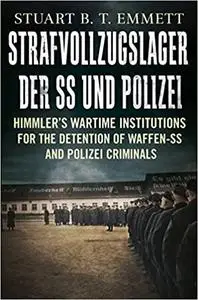Stuart B. T. Emmett, "Strafvollzugslager der SS- und Polizei: Himmler’s Wartime Institutions for the Detention of Waffen-SS and Polizei Crimin"
English | ISBN: 1781555605 | 2017 | 576 pages | AZW3 | 7 MB
English | ISBN: 1781555605 | 2017 | 576 pages | AZW3 | 7 MB
Strafvollzugslager der SS- und Polizei: Himmler’s Wartime Institutions for the Detention of Waffen-SS and Polizei Criminals is a book that Heinrich Himmler would not have wished written. Preferring that this corner of the SS history remained forever in the shadows, the existence of the SS penal system had the potential to besmirch his entire organization. In an effort to disguise the true extent of criminality within the ranks of the Waffen-SS, the Reichsführer-SS temporarily expelled those SS men incarcerated in the Strafvollzugslager der SS- und Polizei, giving the appearance that Hitler’s bodyguard did not suffer the scourge of serious criminality. In unprecedented detail, this study illuminates the reasoning behind the imprisonment of Waffen-SS and policemen in purpose-built institutions, describes the regulations governing their detention and reveals the operational history of these fascinating institutions. The Waffen-SS gaols established at Dachau, Danzig-Matzkau, Förrenbach and a clutch of smaller branch prisons are the focus of this in-depth study. Composed with the assistance of veterans’ families, their contribution has ensured an unparalleled presentation of the convict’s daily life and enumerated the lives of those tasked with the prisons operation. Ensuring that the convict’s National Socialist spirit was undamaged by their punishment, the prison guards provided the malfeasance elements of the Waffen-SS with an SS suitable environment which enabled their further use to the regime. Eventually, these institutions become portals through which inmates passed to return to the front. No book written on this subject would be complete without analysing the various Waffen-SS field probation units that accepted paroled convicts. Here, at the front, Himmler commanded that they faced death, or serious wounding as the means to earn their full rehabilitation and return to the ranks of the SS. Scrutinised as part of this process is the SS-Bewährungsbataillone, the infamous SS-Sonderkommando Dirlewanger and the SS-Fallschirmjägerabteilung. Criminal case histories are tendered throughout this work and describe the crimes and punishments imposed on those who had brought shame on the SS.



